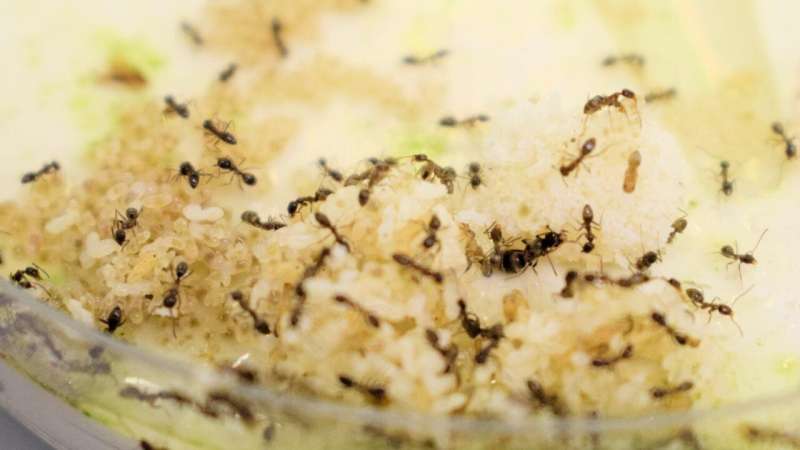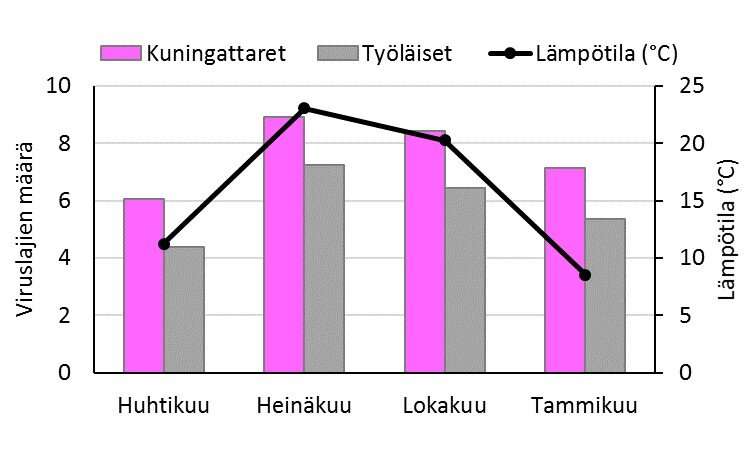Argentine ants in laboratory. Credit: Jaana Jurvansuu
Argentine ants are one of the most successful invasive species in the world. Scientist from University of Oulu and University of Girona, Spain, have previously identified viruses from the invasive Argentine ants of the Mediterranean region and found several new virus species. Now the researchers studied the ant's virus ecology, because loss of pathogen may help an invasive species succeed in a new environment.
The study found that ant queens had more virus species than workers or males. Queens may physiologically be able to withstand more viruses, or they may have more social interactions through which viruses transmit than workers or males.
Some of the viruses were found from the ants all year round whereas other viruses were seasonal. Interestingly, all the seasonal viruses appeared during warm months and disappeared when weather become cold (Figure 1). Food collecting activity of the ants also increase during summer and hence it is possible that the seasonal viruses came from the insect prey.
Argentine ants have invaded 6000 kilometers of the Mediterranean coast and thus they cover extremely large area where they could spread viruses to native insects. For example, Kashmir bee virus, which is one cause for the global bee decline, is among the seasonal viruses that infects the invasive Argentine ant.
The Argentine ant queens (pink bars) have on average more virus species that workers (grey bars). Abundance of virus species in the invasive Argentine ants is highest when the temperature (black line) is highest on July. Credit: The University of Oulu
More information: Sílvia Abril et al. Season- and caste-specific variation in RNA viruses in the invasive Argentine ant European supercolony, Journal of General Virology (2020). DOI: 10.1099/jgv.0.001384
Provided by The University of Oulu























